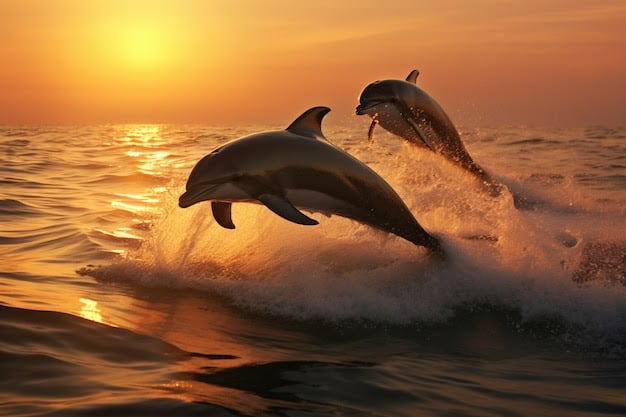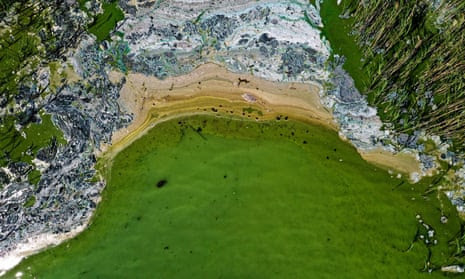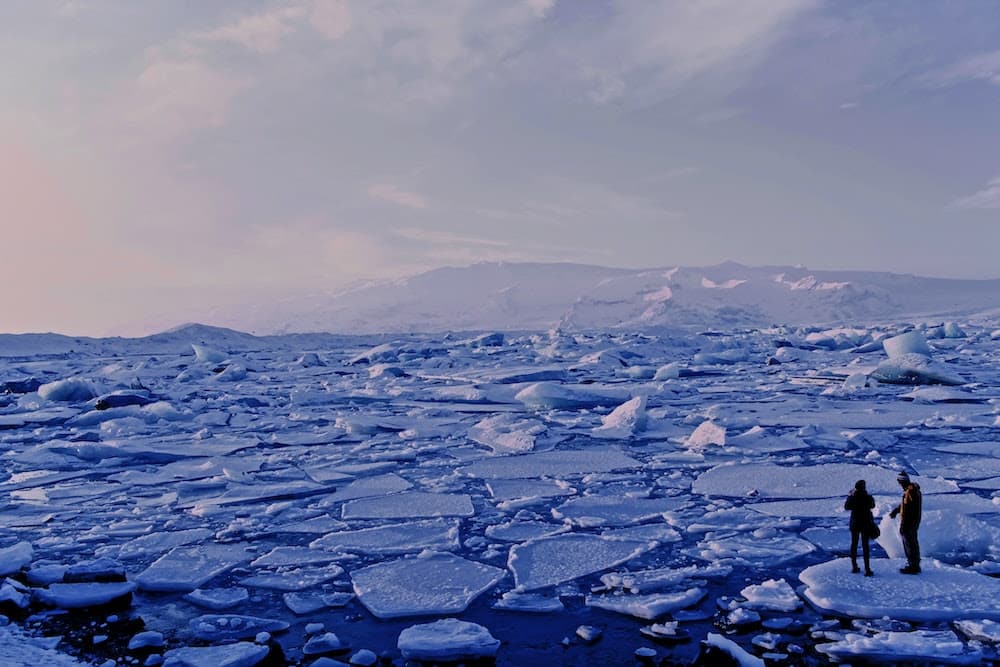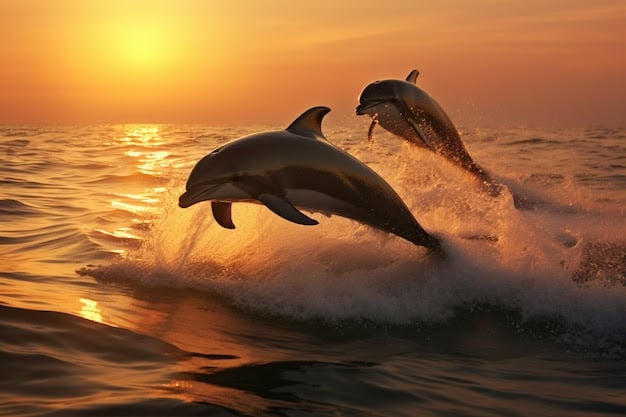
The dolphin is a marine aquatic mammal, sometimes of fresh water, an odontocète of the order of Cetaceans and in the families of Delphinidae, Iniids, Platanistidae and Pontoporiidae. The dolphin is an excellent swimmer, gregarious and living in a group.
The dolphin, like any underwater mammal, is not a fish: the tail (caudal fin) is positioned in a horizontal plane (vs. vertical caudal fin in fish). As dolphins are mammals, it is better to speak of fins rather than fins.
The size of dolphins varies from 1.8 to 9.5 meters. Most species weigh between 50 and 200 kg. The orcas, which is a dolphin, hold records with a height of 9.5 meters for a weight of 9 tons. The killer whale is the largest dolphin in the order Artiodactyla.
If the dolphin is mostly a marine animal, there are freshwater dolphins, the botos in northern South America with the inies.
Dolphins are found all over the world, mainly in the shallow seas of continental shelves, and are carnivores, eating mainly fish and squid. The family of dolphins, the largest in the order of cetaceans, evolved relatively recently, about ten million years ago, in the Miocene.
The life expectancy of dolphins is approximately 60 years, with a difference between males and females. Females have a longer average lifespan than males: 70-80 years (females) versus 50-60 years (males).
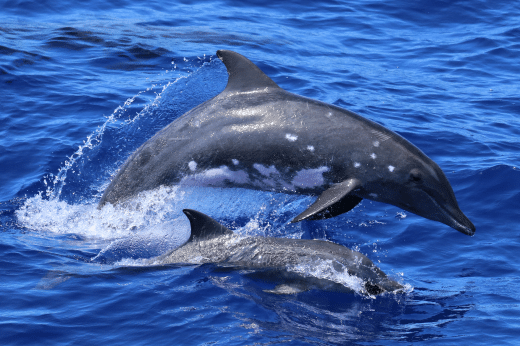
The penultimate dolphin species discovered was in 2011 with Tursiops australis. Killer whales are also a dolphin. The female is sometimes called a dauphine. The last dolphin species described dates from 22 January 2014 with a Brazilian boto and the species Inia araguaiaensis: it took almost 100 years for a new freshwater dolphin to be recognized as a separate taxon.
River dolphin species (family Platanistoidae) are generally small.
These mammals are of the cetacean order. They are average in size, or even relatively small compared to the animals closest to their organization. Their heads are not monstrous like those of sperm whales and whales, but quite proportional to their bodies.
Their jaws are more or less advanced, in the form of a beak, and sometimes their edges are completely lined with numerous, conical and sharp teeth, sometimes these edges have only a very small number or even none at all.
Dolphins never have a baleen; their vents have a common crescent-shaped opening on the head. The body is elongated, smooth; the anterior extremities have become fins (fins), the tail is flattened horizontally and bifurcated, the back is most often provided with a triangular fin, the udder, in number of two, are placed near the organs of generation; the rod of males is trimmed with a bone in its interior, like that of carnivorous mammals, and it is protected in a sheath.
Dolphins have neither the scaly body, nor the curved tail, nor the big head that painters give them in arabesques and other ornaments, but they have a fish shape.

Their smooth, bare skin is often blackish in colour, their figure is oval and their head ends most ordinarily in a point or beak. The middle of their body is the widest and thickest part.
Their tongue is crenellated on its edges, they have no gall bladder, and the hole of Botal is not opened in them. They have extremely small olfactory nerves, and have two small hearing ducts behind the eyes.
Their jaws are most often lined with a row of sharp teeth, the number of which varies greatly according to age and circumstances. A certain variety has up to 56 at the upper jaw, and 60 at the lower jaw, but most have far fewer.
The teeth fit perfectly. Their stomachs are, for the most part, divided into several cavities or pockets, like those of ruminant animals, they have no coecum, their other intestines are about four to five times as long as their whole body.
It is observed that the dolphin species have a brain proportionally larger than that of other cetaceans, and are the most intelligent of all.
As the whales are heavy, wild and stupid, as the dolphins are agile, familiar and gifted intellectual faculties. The first ones have fixed their stay between the polar ice-sheets where they live almost solitary and feed on mollusks, worms which they crush under their fanons; the dolphins, on the contrary, spread themselves on the face of all seas, furrow them in wandering troops, and wreak havoc among the schools of fish.
The nature of whales is peaceful and decent, they have no natural weapons, and do not use their strength to oppress the tribes of animals that live among them. Satisfied with their power, they cast protective and peaceful glances on all beings around them, and rule rather by the respect that they generate than by the despotism that they could use.

On the other hand, the dolphin family is armed with teeth, their character is violent, carnivorous, predatory and yet affectionate, capable of attachment and otherwise less brutal than other varieties of cetaceans. Their instinct is more perfect, their natural more likely to sociability, more lively, more sensitive and more delicate.
These large organized masses, these heavy and colossal whales are apathetic, crude, coarse, insensitive beings; while species of a less disproportionate size show more sensitivity, instinct and intelligence; as if nature had wanted to compensate their weakness by these gifts, and to redeem the qualities of the body by the disadvantages of the spirit, in order to equalize, in a way, the animals among them, and keep them in a mutual independence from each other.
Dolphins are, in a way, the whales’ innate enemies, and often they attack them with vigour, and come together to hunt them. Their ways are turbulent, active, the whales’ ways are shy and slow.
The first make war on fish, chasing them quickly throughout the ocean, the second remain mostly near the poles, aspire to tranquility and rest, live alone or in pairs; dolphins, on the contrary, flock in legions. Thus the characters of these two families are in perpetual opposition.
The dolphin is a young dolphin, it is therefore the juvenile form of cetaceans, whose characteristic is, as for any mammal, to suckle its mother after twenty hours of life and for almost 4 years, depending on the species of dolphins.
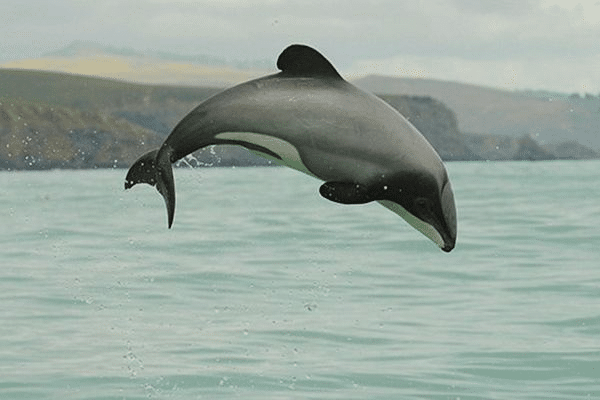
There are currently almost 50 species of dolphins and porpoises that are grouped into six families: the ocean dolphin family is by far the largest. The porpoise family is composed of seven members. And there are four river dolphin families, each containing a single species.
However, classification is not an exact science and as new information and discoveries are revealed, deliberations will continue and some species of dolphins will likely be further divided into several species and/or subspecies.
For example, the common dolphin is now recognized as having two variants – short-beaked and long-beaked. In New Zealand, the Hector’s dolphin has a subspecies known as the Māui dolphin. There are only about 60 of this endangered dolphin.
Names and nicknames can certainly be confusing; there are eight dolphin names that include the word “whale”, including globicefales, false orcas and melon-headed whales. Two species have the whale and dolphin in their names: the northern right whale dolphin and the southern right whale dolphin. It is not surprising that the public and scientists are confused
The difference between dolphins and porpoises
Porpoises are smaller than dolphins because they are less than 2.5 m long. They are also typically larger than dolphins and have a small head, little or no beak and a small triangular dorsal fin (except for the Spotted Porpoises).
Porpoises and dolphins also have different tooth shapes. The porpoise’s teeth are in the shape of a spade, while dolphins are conical.
There are six species of porpoises, including the Gulf Porpoise (Phocoena sinus), which is the most threatened species of all whales, porpoises and dolphins.
More information
https://wiseoceans.com/creature-feature-friday-maui-dolphin
https://www.doc.govt.nz/nature/native-animals/marine-mammals/dolphins/maui-dolphin

